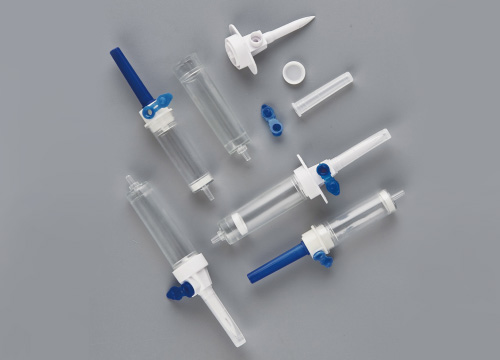

Pre-filled syringes are directly in contact with drugs, […]
Pre-filled syringes are directly in contact with drugs, and their sterility must be guaranteed. Generally, prefilled syringes should be produced in a clean workshop that meets the standards. In addition, to ensure their sterility, if the manufacturer has higher requirements for sterility, Additional ethylene oxide sterilization or cobalt 60 irradiation sterilization can be performed.
The prefilled syringe barrel can be made of plastic or all-glass syringe, and usually has a scale indicating the volume of liquid in the syringe. Glass syringes can be sterilized with an autoclave, but because the processing cost of plastic syringes is lower, most modern medical syringes are made of plastic.
The prefilled syringe mainly uses high pressure to make the medicinal liquid pass through the extremely fine hole to produce the liquid column, so as to achieve the purpose of injection. This type of syringe is used in the prevention and treatment of various diseases. With a variety of specifications, plastic syringe products of different specifications can be selected according to different filling dosages.
The drug packaging mold is a complementary product for plastic molding processing, which gives the drug package a corresponding appearance contour, and is one of the important parts of the drug package molding. The quality of the mold will directly affect the molding effect. So, what are the issues that need to be paid attention to when developing plastic drug packaging molds?

1. The mold design should be reasonable, and the optimal structural plan should be selected as much as possible for manufacturing. The designers should fully consider the technical requirements of the mold and the feasibility and manufacturability of its structural design.
2. The design of the mold is a key link in improving the overall quality of the mold, and we need to consider all aspects of influencing factors. It mainly includes the selection of mold materials, the availability and safety of mold structure, the processing performance of mold parts and the convenience of mold maintenance.
3. For the selection of plastic drug packaging mold materials, we must consider not only meeting the actual requirements of customers, but also material costs and other issues. In addition, we also need to choose according to factors such as the type of mold, the method of use, and the processing speed.
4. In the mold structure design stage, we should try our best to design the structure to be compact and easy to operate, while ensuring that the mold parts have sufficient rigidity and strength. If allowed by the mold structure, the corner positions of the mold parts should be designed as rounded transitions to avoid stress concentration. For cavities, concave molds, and part of cores and punches, we can use combined or inlaid structures to eliminate stress concentration. For those slender punches or core parts, in terms of their structure, Corresponding protective measures need to be taken. If it is a cold die, it should be equipped with a device that can prevent the workpiece or waste from clogging. In addition, we also need to consider how to reduce the impact of the wear of sliding fittings and frequent impact parts on the quality of plastic drug packaging molds during long-term use.
https://www.syringeassemblymachines.com/